A Fish Tank Fireplace is a distinctive addition to any home that can serve as a unique focal point. It creates a calming atmosphere while providing warmth, making it an ideal choice for those seeking relaxation and comfort.
Furthermore, this unconventional home decor idea is low-maintenance and doesn’t require wood or gas, making it easy to maintain. Combining the tranquil ambiance and the warmth from the fireplace can help reduce stress levels and promote overall well-being.
Here we will guide you to constructing a Fish-Tank Fireplace. So sit back, grab some snacks, and dive into this unconventional home decor idea.
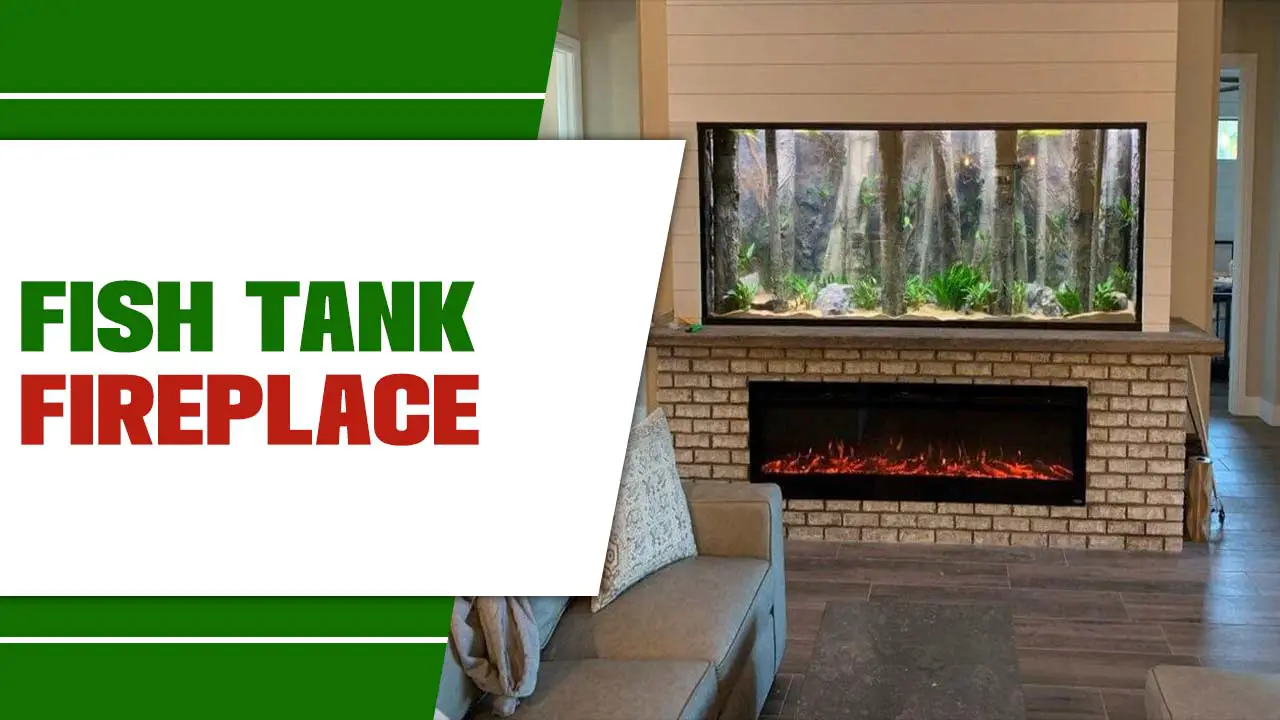
Understanding The Concept Of Fish-Tank Fireplaces
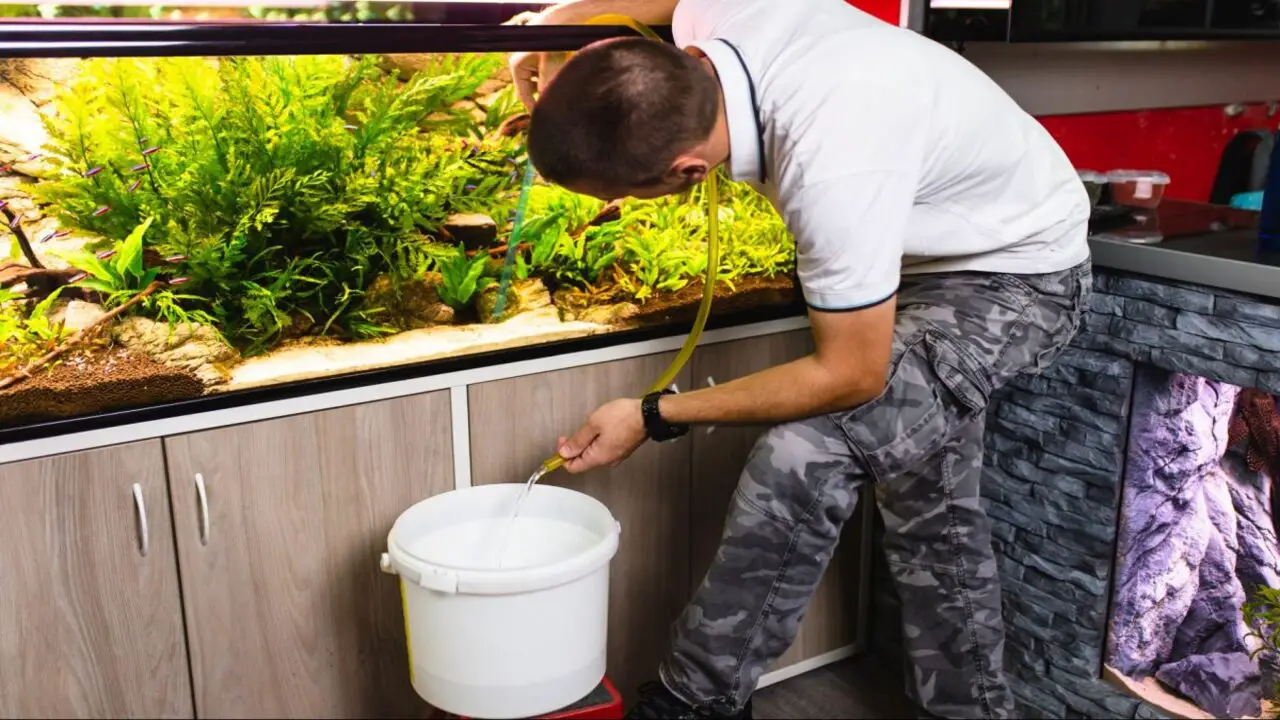
Fish-Tank Fireplaces offer a unique and captivating touch to your home decor. By combining the elements of fire and water, they create a serene ambiance that is both calming and visually appealing. These fireplaces can be customized to fit any space in your home, ensuring a perfect fit.
While maintenance and upkeep may pose challenges, Fish-Tank Fireplaces can be a long-lasting and rewarding addition with proper care. Safety is crucial, so working with a professional installer for installation and maintenance is essential.
Step-By-Step Guide To Constructing A Fish Tank Fireplace
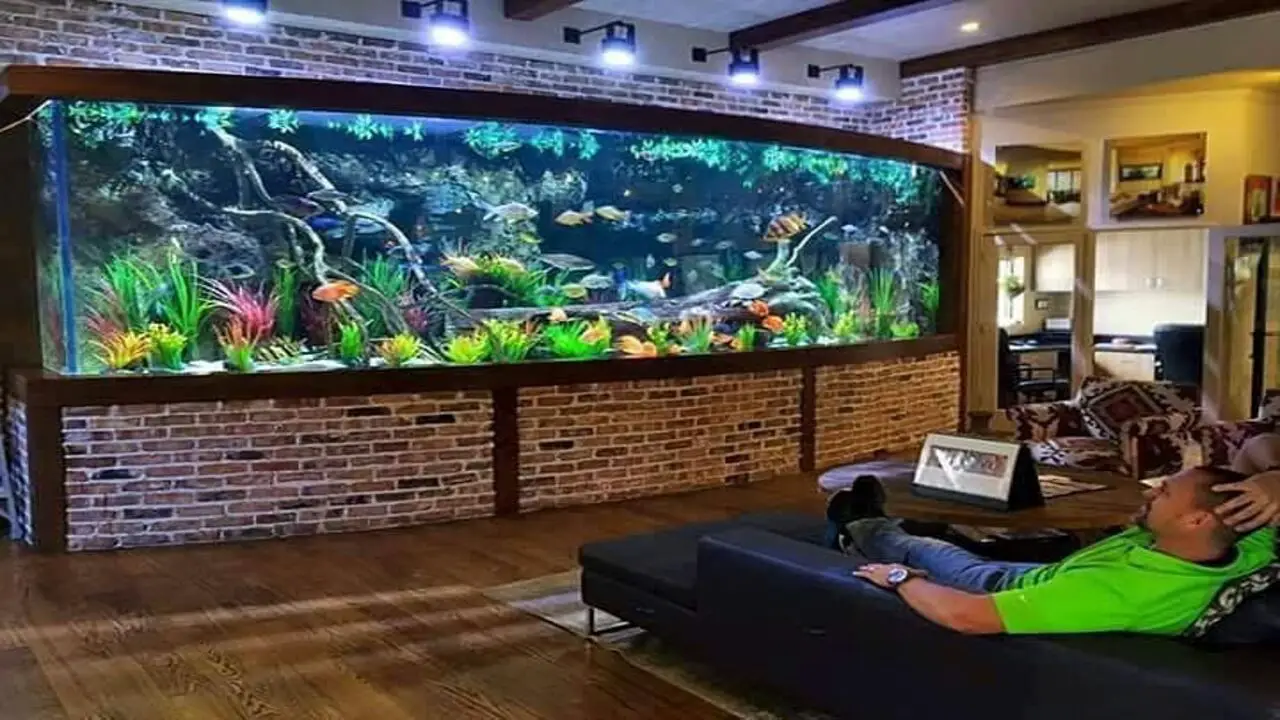
To construct a Fish Tank Fireplace, gather the necessary materials: a gas fireplace insert, aquarium glass, silicone sealant, and a custom-made stand. Next, design the layout by sketching how you want the fish tank to look inside the fireplace.
Install the gas fireplace according to the manufacturer’s instructions, and then attach the aquarium glass using silicone sealant. Fill the tank with water, chemicals, fish, and decorations. Remember to regularly clean and maintain the tank for the fish’s health and the fireplace’s longevity.
Materials And Tools Necessary For Building A Fish-Tank Fireplace
To build a Fish-Tank Fireplace, you will need several materials and tools. The materials required include a fish tank, aquarium-safe silicone, tempered glass, and fire-resistant stones. The tools needed for this project are a glass cutter, a silicone gun, and a level.
It is crucial to use tempered glass for safety purposes, and fire-resistant stones should be used to separate the fish tank from the fireplace. Using a level will also ensure that the Fish-Tank Fireplace is balanced and secure.
Preparation Of The Aquarium Substrate
Choose a substrate that meets their needs to ensure a safe and healthy environment for your fish and plants. Thoroughly rinse the substrate to remove debris or dust that may harm your aquatic friends. Spread the substrate evenly across the bottom of the aquarium, creating a sloping effect to mimic a natural underwater environment. Consider adding an activated carbon layer to the substrate for improved water quality.
Installing The Lighting System
When setting up a Fish-Tank Fireplace, it is essential to focus on installing the lighting system. The right lighting illuminates the fish and enhances the overall aesthetic appeal. LED strip lights are popular due to their energy efficiency and low heat emission.
Position the lights strategically to avoid shadows or glare, and consult a professional electrician for any wiring or electrical work to ensure safety. Remember to install the lighting system before filling the tank with water and adding fish.
Placing And Filling The Fish Tank
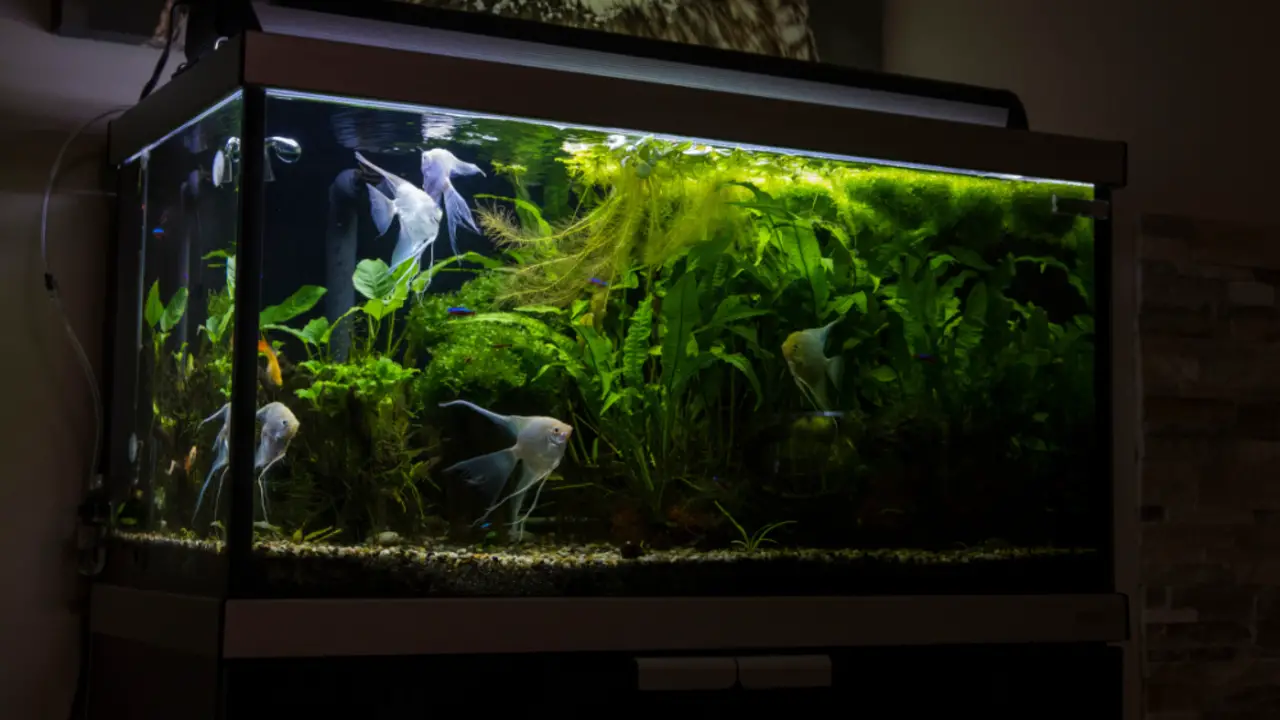
When setting up your Fish-Tank Fireplace, choosing a suitable location away from direct sunlight and heat sources is essential. Ensure the tank is placed on a sturdy support structure capable of handling its weight when filled with water. Fill the tank with water, leaving enough space for decorations and fish.
Enhance the aquarium’s aesthetic with aquarium-safe decorations like rocks, plants, and driftwood. Lastly, introduce fish gradually over several weeks to allow them to acclimate to their new environment.
Wiring The Fish-Tank Fireplace
For wiring a Fish-Tank Fireplace, safety should always be the top priority. Use waterproof and heat-resistant materials for the wiring process to ensure durability. Proper insulation of all wires is crucial in preventing any electrical hazards. If you’re not experienced with electrical work, hiring a licensed electrician for assistance is advisable. Regular maintenance checks should also be conducted to ensure the wiring is functioning safely.
Finishing Touches And Maintenance
To enhance the overall look of your Fish-Tank Fireplace, consider adding decorative elements such as rocks and plants. Regular maintenance is crucial to ensure your fish’s and the tank’s health. Choose fish species that are compatible with each other and the size of the aquarium.
Additionally, be mindful of the type of fireplace fuel you use, as some may not be safe near a fish tank. Proper ventilation is essential to prevent the buildup of harmful chemicals like carbon monoxide.
Key Features And Benefits Of Fish Tank Near Fireplace
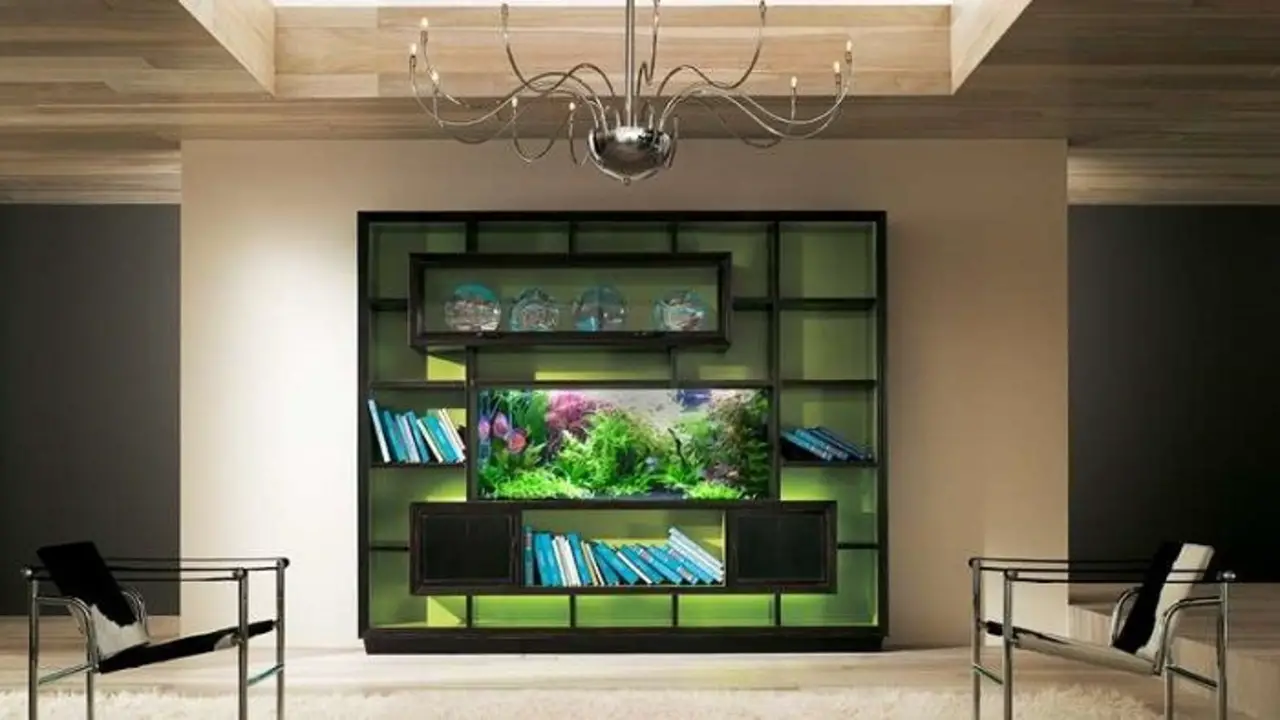
Adding a fish tank near a fireplace brings your living room a unique and calming ambiance. The soothing sound of water and the sight of fish swimming can relieve relaxation and stress. Moreover, the fish tank acts as a natural air purifier, filtering out toxins and releasing oxygen, thus improving indoor air quality.
When constructing this setup, it’s essential to prioritize safety by using heat-resistant materials and ensuring proper ventilation. Additionally, consider the placement and size of the fish tank for optimal visual impact.
Ideas For Fish-Tank Fireplace Designs
Customize your Fish-Tank Fireplace to complement any home décor style, whether modern or traditional. Create an underwater landscape by incorporating rocks, plants, and other decorations into the tank. Add LED lights for a warm ambiance and to highlight the fish.
Remember to choose fish species that are compatible with your fireplace design in terms of temperature and lighting requirements. For design and maintenance guidance, consult a professional aquarium installer.
Unique Designs To Inspire You
Consider incorporating a fish tank into your fireplace design. Various designs include a built-in aquarium or a freestanding fireplace with a fish tank base. Safety is crucial, so use fire-resistant materials throughout the construction process. Consider the type of fish and the maintenance required before building your Fish-Tank Fireplace. With proper planning and execution, you can achieve a functional and visually appealing centerpiece in your living room.
The Challenges Of Maintaining A Fish-Tank Fireplace
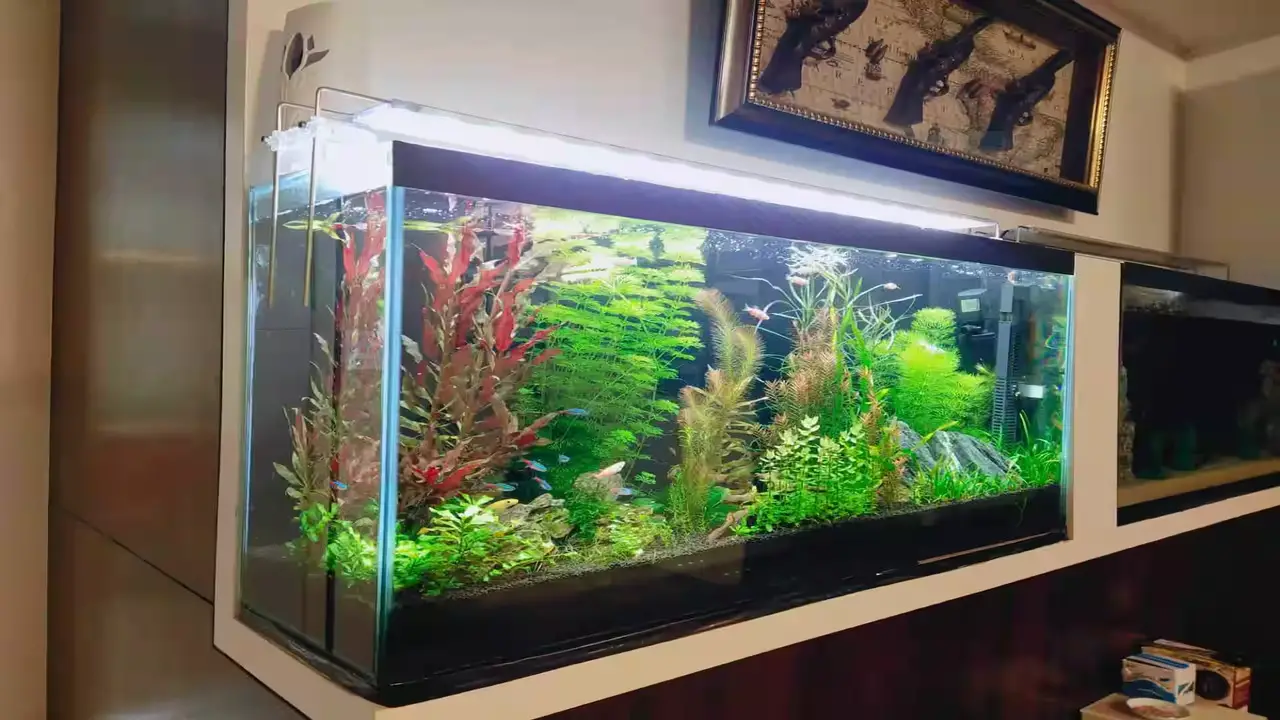
Keeping the water quality optimal is essential for a thriving Fish-Tank Fireplace ecosystem. Regular cleaning and maintenance are crucial to prevent algae and debris buildup. Regulating the temperature of the tank and fireplace ensures the well-being of the fish and plants. Adequate lighting promotes the health and growth of the tank’s inhabitants. Providing proper feeding and nutrition to all living organisms in the tank is vital for their health.
How To Ensure The Health Of Your Aquatic Life?
Maintaining aquatic life’s health requires regular water testing for pH levels, ammonia, and nitrite levels. Water temperature must be consistent to avoid shocking the fish or other aquatic creatures. Adequate filtration is necessary to remove waste and ensure clean water.
Proper feeding with high-quality food is also crucial, but overfeeding should be avoided as it can cause uneaten food to decompose and affect water quality. Regular maintenance of the aquarium or tank is also essential to prevent the accumulation of dirt and debris that can harm aquatic life. By following these guidelines, you can ensure a healthy and thriving aquatic ecosystem in your home or office space.
Conclusion
A Fish Tank Fireplace is a unique and unconventional home decor idea that can bring beauty and serenity to your living space. It offers a mesmerizing view of aquatic life combined with the warmth and coziness of a fireplace. Constructing a Fish-Tank Fireplace requires careful planning, attention to detail, and regular maintenance to ensure the health and well-being of the aquatic life.
However, the effort is worth it as it adds a touch of elegance and sophistication to any room. With a wide range of design possibilities, you can create a Fish-Tank Fireplace that perfectly complements your style and aesthetic preferences. So, consider this extraordinary home decor idea and bring a sense of tranquility and harmony to your living space.
Frequently Asked Questions
Do Fish-Tank Fireplaces Affect The Lifespan Of Fish?
Fish-Tank Fireplaces can impact fish lifespan if not properly maintained. The temperature and chemicals used to maintain the fireplace can stress fish, leading to health problems. Choosing appropriate fish species and regular water changes are crucial for their longevity in a Fish-Tank Fireplace.
Can You Put A Fish Tank Above A Fireplace?
Placing a fish tank above a fireplace is not recommended. The heat and smoke can harm the fish and their environment, leading to harmful temperature fluctuations. It is better to consider alternative locations away from heat sources for your fish tank.
Is A Fish Tank Heater A Fire Hazard?
Fish tank heaters can potentially pose a fire hazard if not used correctly. To ensure safety, always follow the manufacturer’s instructions and guidelines. Never leave the heater on for extended periods or unattended. Regularly inspect the heater for any damage and replace it if necessary.
Should You Put A Heater In A Fish Tank?
Maintaining a consistent water temperature is essential for the well-being of your fish. It’s recommended to use a heater in your fish tank. Different fish species have different temperature preferences, so research their needs.
How Do I Keep My Fish Tank Warm?
Use an aquarium heater for a consistent water temperature to keep your fish tank warm. Place the tank away from drafty areas or windows to prevent temperature fluctuations. Consider adding insulation around the tank and monitoring the water temperature regularly, adjusting the heater as needed.

Aquarium passion is all about connecting with the aquatic life and providing education to the public on the importance of these creatures. We showcase a wide variety of marine life through our exhibits as well as working with schools to provide unique learning opportunities for students of all ages.









